While Bun Rieu is a popular dish across Vietnam, the version served in Hanoi’s Old Quarter is renowned for its exceptional taste and presentation.
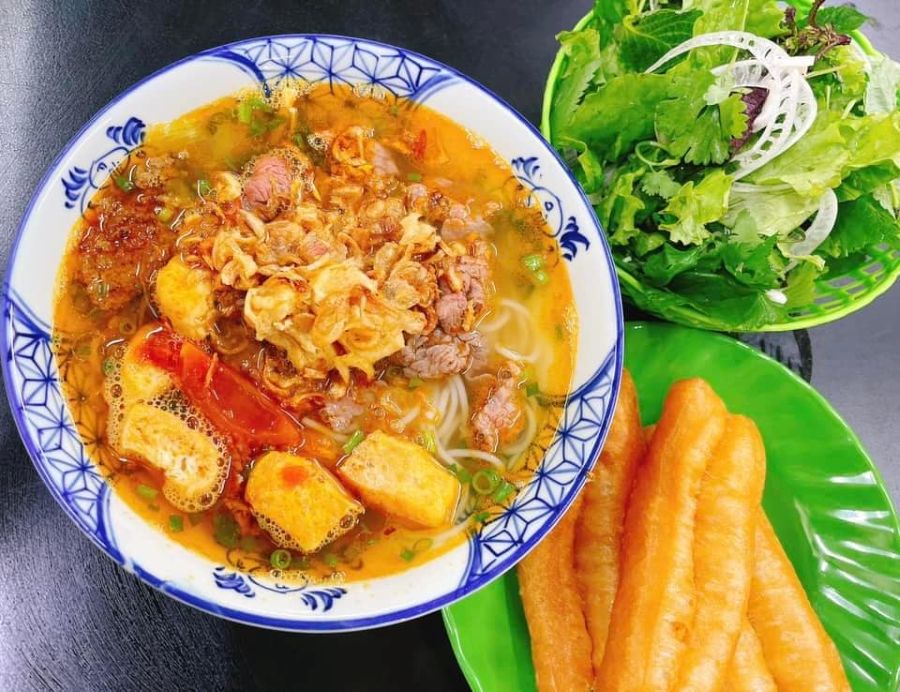 |
| Hanoi Old Quarter’s Bun Rieu delights both the palate and the eyes. Photo: Ngo Thu Trang |
In the heart of Vietnam’s capital, a bowl of Bun Rieu—a hearty vermicelli soup with rice field crab—is a feast for the senses. The dish boasts a vibrant mix of colors, with yellow-brown crab fat, bright red tomatoes, and white vermicelli noodles. The unique flavors of freshwater crab, aromatic tomalley, and slightly sour broth create a memorable dining experience.
Hanoians are known for their discerning taste buds, and Bun Rieu is a dish that embodies this culinary culture. The preparation of this dish is an art form, and the main ingredient—crabs—are carefully selected by Hanoi’s master chefs.
Only the freshest and most delicious crabs make the cut, with specific attention given to their appearance: shiny, large, dark gray shells, intact limbs, and strong claws that point upward. When pressing on their ventral plates, or “aprons,” there should be no bubbling or bending. Male crabs with narrower aprons provide more meat, while female crabs with wider aprons offer a richer yield of tomalley or fat.
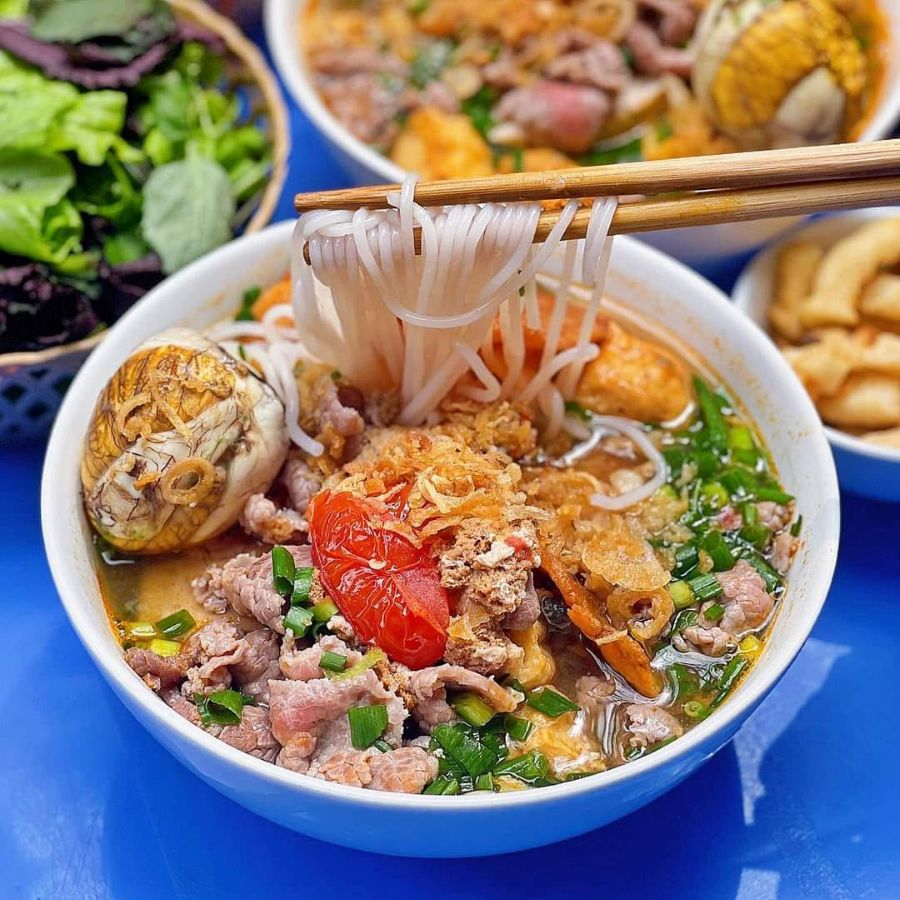 |
| Today, Bun Rieu is often served with beef shank, head cheese, and gristle ribs to cater to different tastes. Photo: Cong Vu |
The selected crabs are then meticulously prepared: washed, ground, and soaked. The broth is slowly simmered over low heat with a pinch of salt, carefully stirred in a circular motion to prevent the meat from sticking and burning. Once the meat floats, it is skillfully removed and set aside.
The next step is crucial—simmering the crab fat to perfection. Sliced dried shallots are fried until fragrant, then the tomalley is added and slowly simmered. A touch of annatto oil enhances both the color and flavor. The fat is then carefully skimmed, and the pan is rinsed, with the flavorful water added back into the broth.
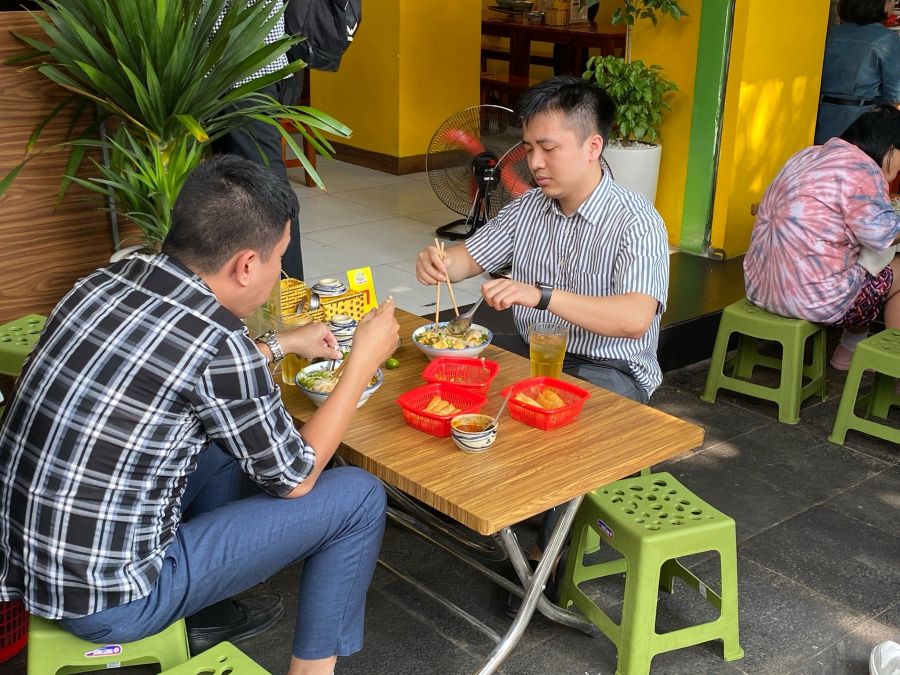 |
| Hanoi diners savor their Bun Rieu from plastic seats on the sidewalk, a unique dining experience. Photo: Bun Rieu Co Huong Beo |
Bun Rieu is elevated with a special condiment: good-quality concentrated vinegar, adding a delicate acidic touch to the broth. Simmered chili is another key ingredient, prepared by frying dried shallots in lard, then adding chili powder and a pinch of salt to taste.
The dish’s signature tomatoes play a dual role: one portion is sliced like orange segments, while the other is chopped. The dried shallots are fried, followed by the chopped tomatoes, which are then sieved and added to the crab broth for color. The sliced tomatoes are cooked briefly, seasoned, and slowly added to the broth for a touch of acidity and vibrant color.
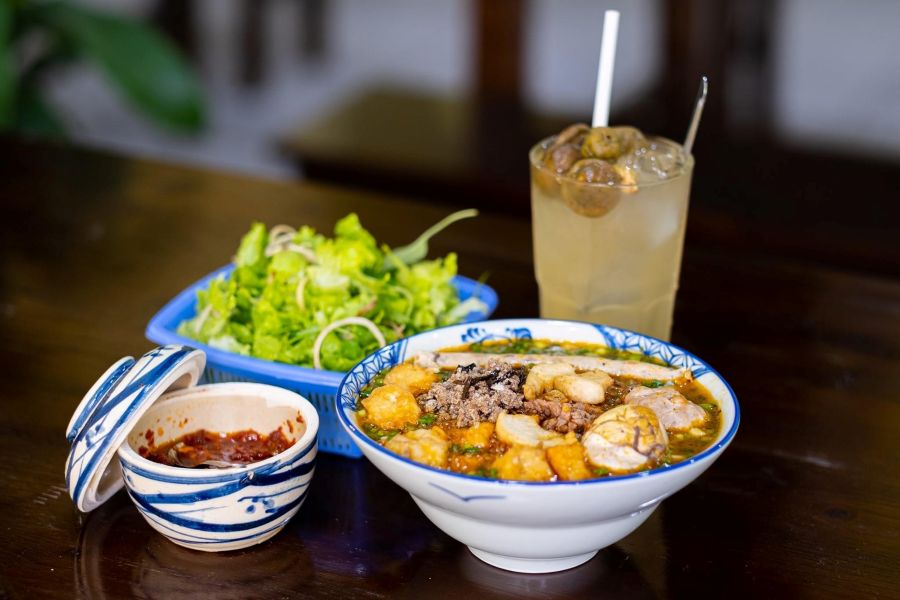 |
| Raw vegetables are a must-have accompaniment to a bowl of Bun Rieu, providing a fresh contrast to the hearty soup. Photo: Bun Rieu Co Huong Beo |
When serving Bun Rieu, a generous portion of thin rice noodles is placed in a bowl, topped with a scoop of crab meat and fat, simmered chili, and chopped green onion. The final touch is the scalding hot broth, poured over the ingredients. Diners can customize their bowl by adding a dash of shrimp paste for an extra layer of flavor and a subtle sweetness.
A traditional Hanoi Bun Rieu is incomplete without a side of raw vegetables. While chopped corn salad was once the standard, it has been replaced by crisp lettuce. Other herbs and vegetables, such as marjoram, Vietnamese coriander, coriander, Vietnamese basil, bean sprouts, and shredded banana blossoms, are mixed and enjoyed with the main dish, adding freshness and texture.
The late author Vu Bang captured the essence of this dish in his book, “Hanoi’s Delicacies“: “Glossy rice noodles, topped with hot crab meat, and glistening purple crab fat with golden dots, alongside red tomato pieces. A touch of shrimp paste and shredded young lettuce that resembles green threads… It is an ancient snack, rustic yet irresistible.”
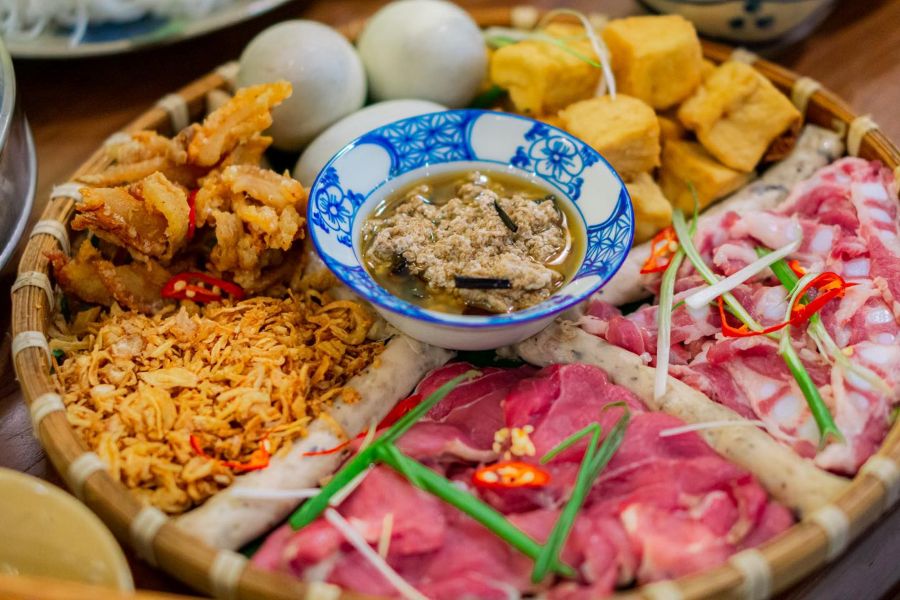 |
| Lau rieu cua, a luxurious take on Bun Rieu, featuring a rich crab hotpot. Photo: Bun Rieu Co Huong Beo |
This description captures the essence of traditional Bun Rieu. Today, you’ll find variations of this dish in Hanoi, with additional ingredients like rare fried beef shank, head cheese, gristle ribs, fried tofu, or even snails.
While Bun Rieu is now widely available in the city, the best versions are often found in the Old Town, prepared by vendors with a long tradition. Diners sit on plastic stools, holding steaming bowls, inhaling the rich aroma of crab and shrimp paste. The soft crab meat, crispy tofu, and leisurely ambiance of Hanoi’s streets create an unforgettable dining experience.
- * Bun Rieu Co Dung (Ms. Dung’s Bun Rieu), No.18 Nguyen Sieu Str., Hoan Kiem District
- * Bun Rieu Ba Diec (Mrs. Deaf’s Bun Rieu), No. 68 Nguyen Thiep Str., Hoan Kiem District
- * Bun Rieu Oc Co Minh (Ms. Minh’s Hot Vermicelli Soup with Rice-field Crab & Snail), No.42 Ly Thuong Kiet Str., Hoan Kiem District
- * Bun Rieu Co Hoan, No. 16 Hang Luc Str., Hoan Kiem District
- * Bun Rieu Co Huong Beo (Ms. Huong Beo, affectionately known as “Fat Huong”), No. 68 Hai Ba Trung Str., Hoan Kiem District
The Captivating Lens of Hanoi’s Streets, Through a British Photographer’s Eyes
The monochrome images offer a poignant glimpse into Hanoi’s past, evoking a sense of nostalgia for a time over 40 years ago. They capture the city’s essence during the subsidy era, showcasing its unique character, and providing a fascinating contrast to Hanoi’s modern-day vibrancy. It is a journey through time, witnessing the growth and transformation of this iconic city.
The Hanoi Heritage Marathon: An International Running Event to Remember
The Standard Chartered Hanoi Marathon Heritage Race, in 2024, is set to be a truly international event, with an expected 18,000 athletes from a diverse range of 55 countries coming together to celebrate the sport. This incredible gathering of global talent promises an electric atmosphere and a unique opportunity to unite runners from all corners of the world in the heart of Vietnam’s vibrant capital city.







